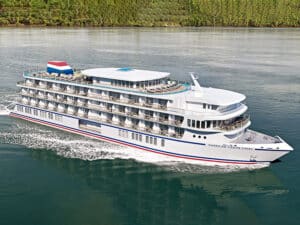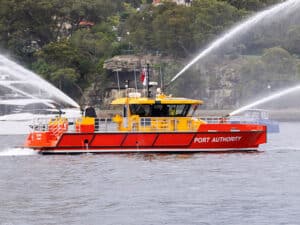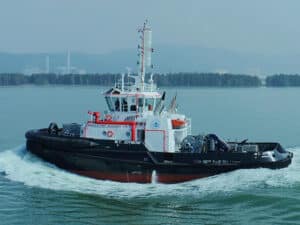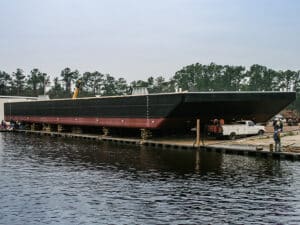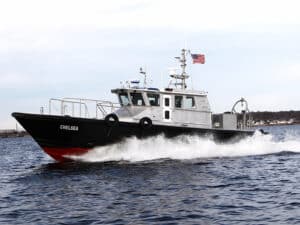
VIDEO: TSB Canada warns on girding risks facing tugs
Written by Nick Blenkey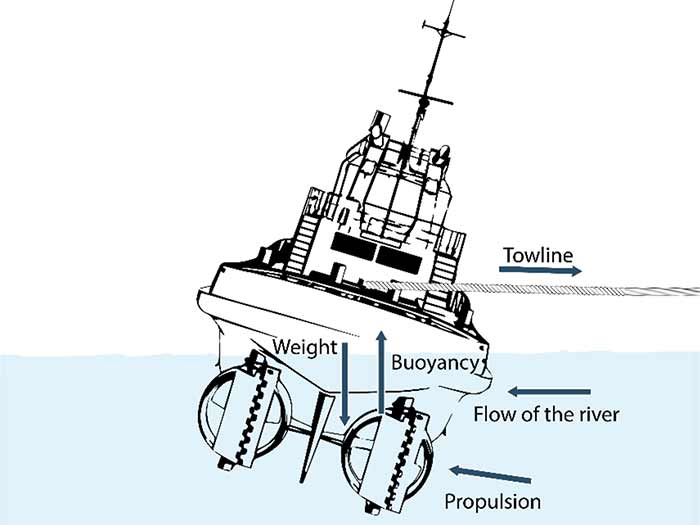
Sources of girding: TSB Canada
The Transportation Safety Board of Canada today released its its investigation report (M18P0230) on the August 2018 girding and capsizing of the tug George H Ledcor. The TSB says that its report highlights the risks facing the towing industry due to a lack of awareness of the factors leading to girding, informal work practices and insufficient guidance and training in the towing industry.
Girding can rapidly lead to a tug or towing vessel capsizing and lives being lost. Here’s how the West of England P&I Club defines the issue.
Girting may also be referred to as girthing, tripping or girding. A towline under tension will exert a heeling moment on the tug if the line is secured around amidships and is leading off towards the beam. As with any vessel which heels over due to an external force, a righting lever is formed as the centre of buoyancy moves towards the centre of the tug’s underwater volume, countering the heeling moment and pushing the tug back upright. However, if the force in the towline is sufficiently powerful, it may overcome the tug’s righting lever and cause it to capsize or “girt.”
West of England P&I Club
On August 13, 2018, notes TSB, the 1964-built George H Ledcor, owned by Ledcor Resources and Transportation Inc. was towing the loaded gravel barge Evco 55, with the assist tug Westview Chinook, leased by Ledcor at the time from Pacific Towing Services Ltd, pushing to an unloading facility in the north arm of the Fraser River, British Columbia.
At approximately 2210 local time, the George H Ledcor girded and capsized after being overtaken by the barge. The four crew members on board were rescued from the tug’s overturned hull.
The investigation found that the girding and capsizing happened quickly following an attempt to change the direction of the barge. As the barge began to overtake the George H Ledcor, the towline exerted a broadside force on the tug, placing it in a girded position. The master applied full starboard rudder and full throttle; however the various forces acting on the tug’s stability combined to increase the tug’s heel. As the tug’s deck edge and bulwarks submerged, the tug heeled further to starboard. Attempts to abort the tow were unsuccessful and the tug rapidly capsized.
The investigation highlighted a number of risk factors, notably: if tug masters are not provided initial and recurrent training and if the towing industry continues to rely primarily on tug masters to manage girding hazards through shiphandling skills and informal practices, there is a continued risk that capsizings due to girding will occur. Also, if Transport Canada oversight and intervention are not effective at changing towing operators’ practices with respect to girding, there is a risk such accidents will continue to occur.
Following the occurrence, Ledcor took a number of safety actions to reduce the likelihood of similar accidents. It supplemented its safety management system with procedures on how to recognize and avoid girding situations. It introduced voyage simulator and classroom training for its masters and mates. It also installed additional standard abort mechanisms in common locations on all company vessels.
In the towing industry, there is a long history of girding occurrences. Between 2005 and 2018, the TSB received reports of 26 girding situations resulting in 21 capsizings.
Download the full TSB report HERE

